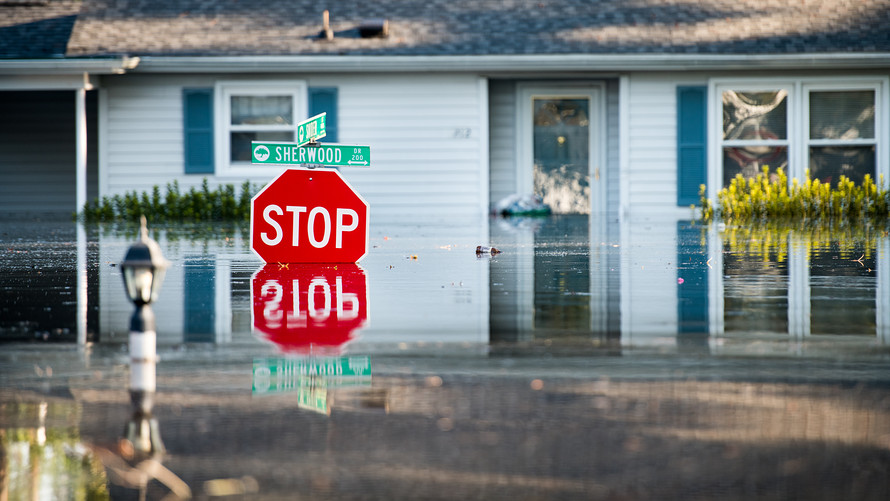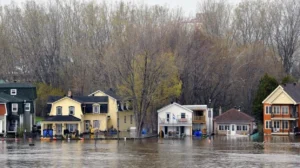Climate change is reshaping the real estate landscape. Investors must adapt their strategies to stay ahead. Rising sea levels, extreme weather, and shifting regulations impact property values and market demand. Understanding these factors, including risk exposure, potential impacts, cost, and climate risk analysis, is crucial for making smart investment choices.
Adapting your investment strategy means considering eco-friendly properties and locations less vulnerable to climate risks, including those favored by insurance companies. It’s about future-proofing your portfolio while tapping into new opportunities. This post dives into how climate change influences real estate and offers practical tips for investors. Get ready to transform your approach and secure your investments in a changing world.
Key Takeaways
-
Assess Climate Risks: Evaluate properties for climate-related risks such as flooding or wildfires before investing. This proactive approach can protect your investment.
-
Adapt Investment Strategies: Consider diversifying your portfolio to include properties in less vulnerable areas, helping to mitigate potential losses from climate impacts.
-
Stay Informed on Insurance: Keep abreast of changes in the insurance market related to climate risks. Understanding coverage options can help you make better financial decisions.
-
Monitor Property Valuations: Be aware that climate change can affect property values. Regularly reassess your investments to ensure they align with current market conditions.
-
Engage with Policies: Stay updated on local and national regulations regarding climate change. Compliance can enhance property value and reduce risks.
-
Collaborate with Experts: Work with real estate professionals and environmental experts to develop effective strategies for adaptation and mitigation, ensuring a more resilient investment approach.
Impact of Climate Change on Real Estate
Frequency of Disasters
Climate change leads to more frequent and severe disasters. Hurricanes, floods, and wildfires are becoming common. These events affect property values significantly. For example, homes in flood-prone areas lose value after a major storm. Investors must consider these risks when buying properties.
Insurance rates also rise due to increased disaster risk. Homeowners may face higher premiums or difficulty finding coverage. This can deter potential buyers, further decreasing property values. A study from the National Oceanic and Atmospheric Administration (NOAA) reported that climate-related disasters cost the U.S. economy over $300 billion in 2020 alone.
Rising Temperatures
Global temperatures continue to rise, impacting real estate locations. Coastal areas face threats from rising sea levels. Cities like Miami and New Orleans are particularly vulnerable. Properties near the coast may see declining demand as buyers seek safer locations.
Heatwaves also affect desirability. Areas with extreme heat become less attractive for living and investment. According to research from the Urban Land Institute, cities with high summer temperatures may experience a decrease in population growth. Investors should evaluate temperature trends before making decisions.
Erratic Weather Patterns
Erratic weather patterns contribute to uncertainty in the real estate market. Droughts, heavy rains, and unexpected snowstorms can disrupt local economies. These fluctuations make it difficult for investors to predict future property values.
For instance, erratic weather can impact agricultural land. Crop failures lead to lower income for farmers, affecting nearby housing markets. Investors may hesitate to invest in regions with unpredictable weather patterns.
Adaptive Practices
Investors must adopt practices that consider climate change impacts. Sustainable building materials can reduce environmental footprints and attract eco-conscious buyers. Properties designed to withstand extreme weather will likely maintain their value better.
Urban planning should focus on resilience. Communities need infrastructure that can handle flooding or heatwaves. Local governments play a crucial role in implementing these changes.
Investors should also stay informed about climate policies and regulations. Changes in legislation can influence property values significantly. Understanding these dynamics helps investors make informed decisions.
Understanding Climate-Related Risks
Physical Climate Risks
Flooding, wildfires, and extreme storms are significant climate change risks. These hazards threaten properties and can lead to severe financial losses. Flooding occurs more frequently due to rising sea levels and heavy rainfall. Areas near coastlines face increased risk from storm surges.
Wildfires have become more common in many regions. Dry conditions and high temperatures create perfect environments for fires to spread. Properties in wildfire-prone areas may see a decrease in value. Extreme storms can cause structural damage and disrupt communities.
Long-Term Effects
Climate change has long-term effects on urban planning. Cities must adapt to these challenges to ensure infrastructure resilience. Planning now includes considerations for climate risks. For example, cities are investing in flood defenses and green spaces to absorb rainwater.
Infrastructure such as roads, bridges, and utilities also needs upgrades. Older structures may not withstand the increasing severity of weather events. Urban planners incorporate climate resilience features into new designs. They aim to reduce vulnerability to climate hazards.
Data-Driven Assessments
Evaluating climate-related risks requires data-driven assessments. Investors need accurate information about potential risks before making decisions. This analysis includes reviewing historical weather patterns and future projections.
Tools like Geographic Information Systems (GIS) help map out risk exposure. They provide visual representations of areas most affected by climate change threats. Investors should consider these assessments when developing their strategies.
The Global Risks Report highlights the importance of understanding these factors. It emphasizes that rapid climate change presents significant risks to investments across various sectors.
Investors should prioritize properties with strong climate resilience features. These include energy-efficient designs and materials that withstand extreme weather. Properties equipped with such features tend to retain value better during downturns caused by climate crises.
Challenges in Insurance Market
Pricing Difficulties
Insurance companies face significant challenges when pricing policies for high-risk areas. Climate change increases the frequency and severity of natural disasters. Insurers must account for these risks, which can push premiums higher. For example, areas prone to flooding or wildfires see steep premium increases. In some cases, insurers may even withdraw coverage altogether. This creates a gap in the market for homeowners and investors.
High-risk areas often struggle to find affordable insurance options. Insurers worry about potential losses from claims after disasters. As a result, they might raise prices to cover these risks. This cycle can make it hard for property owners to maintain necessary coverage.
Impact of Claims
The rising number of claims affects the sustainability of the insurance market. In 2020 alone, the U.S. faced over $95 billion in insured losses from natural disasters. This figure continues to grow each year. With more claims, insurers may need to increase premiums further. Higher premiums can lead to fewer people purchasing insurance.
As claims rise, insurance companies also face pressure on their reserves. They must hold enough funds to pay out claims after disasters. If claims exceed expectations, companies risk financial instability. This could lead to bankruptcies or reduced services in high-risk areas.
Regulatory Changes
Regulatory changes play a crucial role in insurance coverage availability. Governments often impose new rules following significant climate events. These regulations aim to protect consumers but can complicate the insurance landscape.
For instance, states may require insurers to offer coverage in certain areas. While this helps homeowners, it can strain insurers’ resources. Companies may struggle to provide affordable policies if they are forced to cover high-risk properties.
e regions have implemented stricter building codes. These codes aim to reduce damage from climate events but can increase construction costs. Higher costs may be passed down to homeowners through increased premiums.
Shifts in Property Valuation
Climate Risk Assessments
Climate risk assessments are changing how property valuation works. These assessments consider factors like flooding, hurricanes, and wildfires. They help investors understand potential losses from climate-related events. As a result, valuation methodologies now include these risks. Properties in high-risk areas may see a decrease in their market value. Investors must adapt to this new reality.
Declining Property Values
The trend of declining property values is evident in areas vulnerable to climate hazards. For example, coastal regions face rising sea levels. This leads to significant property damage and increased insurance costs. Properties that once held high value now struggle to attract buyers. In some cases, homeowners experience losses due to inflation and escalating repair costs. The decline in property values affects local economies as well.
Resistance to Mapping
Homeowners and municipalities often resist climate risk mapping. Many fear that acknowledging risks will lower property values further. This resistance can hinder efforts to implement effective strategies for adaptation. Municipalities may delay necessary infrastructure improvements due to financial concerns. They worry about the impact on tax revenues if properties lose value.
Such resistance creates a gap in market perception. Buyers may not fully understand the risks associated with certain properties. Lack of transparency can lead to poor investment decisions. Investors need reliable information to make informed choices.
Implications for Investments
Investors should consider these shifts when developing their strategies. A property’s location plays a crucial role in its future value. Areas prone to climate-related hazards may require more careful evaluation. Investors should prioritize properties with strong resilience plans and infrastructure improvements.
Properties that have adapted to climate change may offer better long-term returns. Investments in green building practices can also enhance value over time. Sustainable features appeal to buyers who prioritize environmental responsibility.
Strategies for Adaptation and Mitigation
Effective Adaptation
Property owners can adopt several adaptation strategies to enhance their resilience against climate impacts. One effective approach is to conduct a thorough risk assessment. This helps identify vulnerabilities related to flooding, extreme weather, and rising temperatures.
Implementing green infrastructure is another strategy. Green roofs, permeable pavements, and rain gardens can reduce runoff and improve water management. These features not only protect properties but also contribute to local ecosystems.
Investors should consider the location of their properties. Choosing zones less prone to natural disasters can minimize risks. Areas with established emergency response plans are often safer investments.
Mitigation Measures
New developments must incorporate mitigation measures to lessen environmental footprints. Energy-efficient designs play a crucial role in this effort. Using high-quality insulation and energy-efficient windows reduces heating and cooling demands.
Integrating renewable energy sources, like solar panels, can significantly cut carbon emissions. Properties that generate their own energy are more sustainable and appealing to environmentally conscious buyers.
Developers should focus on sustainable materials. Recycled or locally sourced building materials reduce transportation emissions and promote sustainability.
Sustainable Building Practices
Sustainable building practices are vital for future-proofing real estate investments. These practices not only enhance property value but also attract tenants looking for eco-friendly options.
Implementing resilient architecture can help buildings withstand climate impacts. Features such as elevated structures in flood-prone areas or wind-resistant designs are essential in today’s changing climate.
Incorporating smart technology also improves efficiency. Smart thermostats and energy monitoring systems allow for better resource management. This leads to reduced operational costs over time.
Investors should stay informed about global climate change mitigation efforts. Understanding these initiatives can guide investment decisions and align with broader sustainability goals.
Role of Policies and Regulations
Existing Policies
Governments have created various policies to combat climate change. These policies target the real estate sector specifically. For instance, many states have implemented building codes that require energy efficiency. These codes aim to reduce carbon emissions from buildings. In 2009, California introduced the Title 24 regulations. It mandates strict energy efficiency standards for new constructions.
e cities have adopted green building initiatives. These policies encourage developers to use sustainable materials. They also promote renewable energy sources in construction projects. Programs like LEED (Leadership in Energy and Environmental Design) provide guidelines for environmentally friendly building practices.
New Regulations
New regulations can push property developers toward sustainable practices. Incentives such as tax breaks or grants can motivate builders to adopt eco-friendly methods. For example, New York City offers financial incentives for using solar panels on buildings. These incentives help offset initial costs and encourage wider adoption of renewable energy.
Moreover, stricter regulations on water usage can drive innovations in water-efficient designs. The EPA has established guidelines that promote low-flow fixtures in new constructions. Such measures not only conserve water but also lower utility costs for homeowners.
Government Initiatives
Government initiatives play a crucial role in supporting communities facing climate-related challenges. Federal programs often provide funding for local adaptation projects. For instance, the Federal Emergency Management Agency (FEMA) offers grants to improve infrastructure resilience against flooding.
Local governments also implement community plans focused on sustainability. They may develop green spaces to absorb stormwater and mitigate urban heat islands. These initiatives enhance community well-being and protect local ecosystems.
Public awareness campaigns educate citizens about climate risks. Governments can share data on potential hazards like rising sea levels or extreme weather events. This information helps communities prepare better for climate impacts.
Importance of Collaborative Efforts
Stakeholder Collaboration
Collaboration among real estate stakeholders is crucial. Developers, investors, and local governments must work together. Each player brings unique insights and resources. This teamwork helps address the impacts of climate change effectively. For instance, a partnership can lead to the development of sustainable buildings. These structures use less energy and withstand extreme weather events.
In 2020, cities like Miami began forming alliances with environmental organizations. They aimed to create resilient neighborhoods. Such collaborations enhance decision-making processes. They also ensure that investments consider future climate risks.
Community Engagement
Community engagement plays a critical role in developing climate-resilient strategies. Local residents often have valuable knowledge about their environment. Their experiences can inform better planning and development practices. Engaging communities in discussions leads to more tailored solutions.
For example, after Hurricane Sandy in 2012, New York City held community forums. Residents shared their experiences and concerns about flooding. This feedback shaped the city’s investment strategy in flood defenses. It emphasized the need for infrastructure that protects vulnerable areas.
Knowledge Sharing
Knowledge sharing among stakeholders enhances collective responses to climate risks. Sharing best practices allows players to learn from each other’s successes and failures. This process builds a stronger foundation for future projects.
Organizations like the Urban Land Institute promote workshops on climate adaptation. These events bring together experts from various fields to discuss innovative solutions. Participants leave with actionable ideas that they can implement in their own communities.
The year 2021 saw significant advancements in this area. Many cities adopted new technologies based on shared knowledge. These technologies improve energy efficiency and reduce emissions in real estate developments.
Call to Action
A call for collaboration is essential as climate change continues to affect real estate markets. Stakeholders must prioritize partnerships over competition. Working together leads to better outcomes for everyone involved.
Investors should seek opportunities that align with sustainability goals. Local governments must support these initiatives through favorable policies and incentives. Environmental organizations can provide expertise and resources needed for successful implementations.
Future Outlook for Real Estate
Investment Strategies
Climate change will significantly reshape investment strategies in the real estate market. Investors must consider environmental risks when making decisions. Properties in areas prone to flooding or wildfires may see decreased demand. This shift requires investors to adapt their approaches. They should prioritize properties with sustainable features. These include energy-efficient systems and environmentally friendly materials.
Real estate developers are already responding to these changes. Many are incorporating green building practices into their projects. This trend is likely to continue as buyers seek eco-friendly options. As a result, properties that meet sustainability standards may hold higher value over time.
Sustainable Development Trends
Emerging trends in sustainable development will impact property values. The demand for green buildings is on the rise. More buyers prefer homes with renewable energy sources, such as solar panels. These properties often command higher prices compared to traditional ones.
Local governments are also pushing for sustainable practices. Many cities have introduced incentives for green construction. These include tax breaks and grants for real estate companies that adopt eco-friendly measures. Such initiatives encourage developers to invest in sustainable technologies.
Investors should pay attention to these trends. Properties that align with future climate projections will likely appreciate in value. Sustainable developments can lead to long-term profitability and reduced operational costs.
Long-Term Viability
The long-term viability of real estate investments hinges on understanding climate-related challenges. Extreme weather events are becoming more frequent and severe. Investors must assess the resilience of their properties against these risks.
Properties located in vulnerable regions may not be viable long-term investments. Investors should analyze historical data on climate impacts in specific areas. This analysis helps identify potential risks and informs better investment choices.
Technology plays a crucial role in enhancing property resilience. Smart building technologies can improve energy efficiency and reduce vulnerability to climate change effects. Real estate companies that leverage these innovations may gain a competitive advantage.
Summary
Climate change is reshaping the real estate landscape. You must understand its impact and adapt your investment strategies accordingly. Recognizing climate-related risks, navigating insurance challenges, and adjusting property valuations are crucial steps. Collaboration and staying ahead of policies will strengthen your position in this evolving market.
As you move forward, prioritize adaptation and mitigation strategies. Invest in properties that are resilient to climate change. This not only protects your assets but also appeals to a growing market of environmentally conscious buyers. Stay informed, network with experts, and be proactive. Your ability to adapt can set you apart in this competitive field. Take action now to secure your future in real estate.
Frequently Asked Questions
What are the main impacts of climate change on real estate?
Climate change can lead to increased flooding, wildfires, and extreme weather events. These risks can affect property values, insurance costs, and overall market stability.
How can investors assess climate-related risks?
Investors should conduct thorough due diligence, including environmental assessments and risk analysis. Tools like climate risk modeling can help evaluate potential impacts on properties.
Why is the insurance market a challenge for real estate?
The insurance market faces challenges due to rising claims from climate-related disasters. This can lead to higher premiums or difficulty obtaining coverage, impacting investment viability.
How does climate change shift property valuation?
Properties in high-risk areas may see declining values as buyers become more cautious. Conversely, eco-friendly or resilient properties may appreciate due to growing demand for sustainable living.
What strategies can be employed for adaptation and mitigation?
Investors can invest in resilient infrastructure, enhance energy efficiency, and adopt sustainable practices. These strategies can protect assets and improve long-term value.
How do policies and regulations influence real estate investments?
Government policies on sustainability and zoning can significantly impact property development and valuation. Staying informed about regulations helps investors make strategic decisions.
What is the future outlook for real estate in relation to climate change?
The future of real estate will likely involve greater emphasis on sustainability and resilience. Investors who adapt their strategies now will be better positioned for success in a changing environment.
 Subscribe to our podcast
Subscribe to our podcast 




